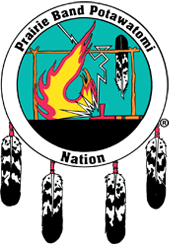March 17, 2015 –
MAYETTA: The PBPN has entered into a cooperative agreement with the Department of Interior to process a Land Buy-Back program that is part of the Cobell Settlement agreement. The purpose of the Land Buy-Back program is to consolidate fractional interests in trust lands that are on the Prairie Band Potawatomi Common Land. Other federally recognized tribal nations are also being offered this voluntary program.
Below are some frequently asked questions that have been developed by staff from the PBPN who are working on the program and in addition a webpage has been developed on the tribal website at www.pbpindiantribe.com/pbpn-land-buy-back-program.aspx.
Three informational meetings have been held previously with two in Kansas and one in Wisconsin. For more information contact Marzha Fritzler, program coordinator at 785.966,4030.
Land Buy-Back Program for Tribal Nations
Following is a list of questions with answers from earlier informational meetings.
Who do I call to sell my land?
If you own land interests and wish to register as a willing seller, please call the Trust Beneficiary Call Center at (888) 678-6836.
How was the priority list developed?
The Nation developed a priority list using the following steps: a list was made with all 259 tracts eligible for purchase through the Land Buy-Back Program, and then the list was sorted based on a score developed using the Tribal Priority, Tract Location, Tract Size, and the number of Purchasable Fractional Interests.
What do those terms mean?
Tribal Priority – The Nation wishes to focus more on purchasing the tracts in which the Nation is already an interest owner. These tracts are scored higher than the tracts in which the Nation is not an owner.
Tract Location – The Nation wishes to focus more on purchasing the tracts near established utilities that may have some commercial potential. These desired tracts along 150th, 158th, and US 75 are scored higher than tracts that have a minimal commercial potential.
Tract Size – The Nation wishes to focus more on purchasing tracts that are greater than 40 acres. Tracts that are 40 acres or greater are scored higher than tracts that are less than 40 acres.
Purchasable Fractional Interests – The Nation wishes to focus more on purchasing tracts that have a larger number of Purchasable Fractional Interests (PFI). Tracts that have a larger PFI are scored higher.
Will everyone get an offer?
Unfortunately, not everyone will get an offer. The Land Buy-Back Program for Tribal Nations has given the Nation a purchase ceiling of $4.3 million.
What are the offers based on?
The offers are based on BLM appraisals created from comparable sales for the area.
Why are we going after specific tracts?
The Nation is not going after specific tracts. The selection of tracts is based on the priority list.
Is there a difference in value with blacktop roads and gravel roads?
Yes. The more improved the land is the greater the value. Roads and utilities add more value.
Can the Nation as an interest holder do as they wish once they are on a tract?
The Nation may claim Owner’s Use and the Nation would need to compensate the co-owners for the intended use of the tract.
Can the Nation as a majority interest holder do as they wish once they are on a tract?
The Nation may claim Owner’s Use and the Nation would need to compensate the co-owners for the intended use of the tract.
What are the complications if there are easements on a tract and the Nation acquires interests in that tract?
No complications. If there is a need to obtain easements, the BIA would request consent from the Nation as we would from the other co-owners. The BIA would need the tribal consent no matter how small or large the interest was.
If the Nation owns part of my tract, can I keep having ceremonies on the land if I don’t sell?
The Nation will not infringe on any landowner’s rights.
What is the Nation’s responsibility if it owns interests in a tract that has a family cemetery on it?
That is up to the Nation and to the family whose family members are buried there. The Nation is not required to do anything, but arrangements can likely be made.
Is the Nation responsible for maintenance?
That is up to the Nation and to the family whose family members are buried there. The Nation is not required to do anything, but arrangements can likely be made.
Can the Nation bury non-family members on the tract?
That is up to the Nation and to the family whose family members are buried there. The Nation is not required to do anything, but arrangements can likely be made.
What are the steps in partitioning a tract?
That is a complicated process. If the Nation has an interest in the tract, the tract can’t be partitioned without an approved land consolidation plan (BIA approved). Also it is almost impossible to partition when there is a non-trust or fee interest on the tract.
For those who don’t sell, can they will their interests to a non-tribal relative?
No. Under AIPRA, your trust land can retain its trust status if it passes to eligible heirs. AIPRA defines eligible heirs as your: children, grandchildren, great-grandchildren, brothers and sisters, half brothers and sisters by blood, or any parents of the above are eligible heirs, as long as they are Indian, or lineal descendants within 2 degrees of an Indian.
